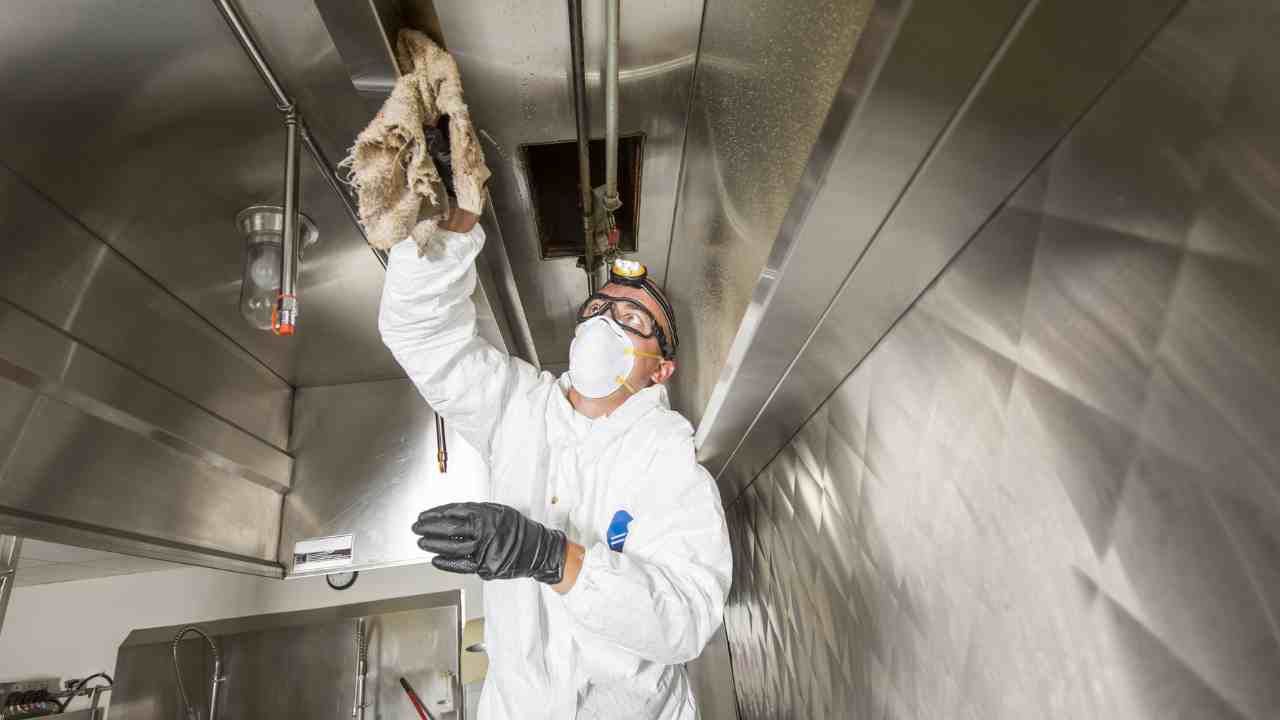Steps Involved In Kitchen Exhaust Cleaning

Ontario-wide Kitchen Exhaust and Hood Cleaning – Best prices and service guaranteed.
Keeping a kitchen clean and well-maintained is essential for the health and safety of both the staff and customers. One crucial aspect of kitchen cleanliness is the regular cleaning of the kitchen exhaust system. A properly functioning and clean exhaust system not only improves air quality but also reduces the risk of fire hazards. In this article, we will explore the steps involved in kitchen exhaust cleaning and the importance of each step.
1. Inspection and Assessment
The first step in kitchen exhaust cleaning is a thorough inspection and assessment of the entire system. This includes the exhaust hood, ductwork, and exhaust fan. A professional technician will examine the system for any signs of grease buildup, blockages, or damage. They will also assess the overall condition of the system and identify any areas that require special attention.
During the inspection, the technician may use specialized tools such as cameras or mirrors to access hard-to-reach areas and ensure a comprehensive assessment. This step is crucial as it helps determine the extent of cleaning required and allows the technician to plan the cleaning process accordingly.
2. Preparation
Once the inspection is complete, the next step is to prepare the kitchen and surrounding areas for the cleaning process. This involves covering and protecting all surfaces, equipment, and appliances to prevent any damage or contamination. The technician will also ensure that the kitchen is properly ventilated to minimize the spread of cleaning chemicals and fumes.
Additionally, the technician will disconnect the exhaust fan and cover it to prevent any debris or cleaning solution from entering the fan motor. This step is crucial to protect the fan and ensure its proper functioning after the cleaning process.
3. Degreasing and Cleaning
Ontario-wide Kitchen Exhaust and Hood Cleaning – Best prices and service guaranteed.
The actual cleaning process begins with degreasing the exhaust system. A powerful degreasing agent is applied to the interior surfaces of the exhaust hood, ductwork, and fan. This agent helps break down and dissolve the accumulated grease and grime, making it easier to remove.
The technician will use specialized tools such as scrapers, brushes, and pressure washers to thoroughly clean the interior surfaces. They will pay special attention to areas prone to grease buildup, such as the hood filters, corners, and bends in the ductwork. The goal is to remove all traces of grease and ensure a clean and hygienic kitchen exhaust system.
4. Rinse and Sanitize
After the degreasing and cleaning process, the next step is to rinse the entire system to remove any remaining cleaning solution and debris. This is typically done using hot water and a high-pressure washer. The technician will ensure that all surfaces are thoroughly rinsed to prevent any residue from remaining in the system.
Once the rinsing is complete, the technician will sanitize the entire system to eliminate any bacteria or pathogens that may be present. This step is crucial for maintaining a hygienic kitchen environment and preventing the spread of foodborne illnesses.
5. Reassembly and Final Inspection
After the cleaning, rinsing, and sanitizing process, the technician will reassemble the exhaust system. This includes reconnecting the exhaust fan, replacing any filters, and ensuring that all components are properly secured.
Once the reassembly is complete, a final inspection is conducted to ensure that the entire system is clean, functional, and compliant with local regulations and safety standards. The technician will check for any signs of damage, leaks, or blockages and make any necessary repairs or adjustments.
Importance of Kitchen Exhaust Cleaning
Ontario-wide Kitchen Exhaust and Hood Cleaning – Best prices and service guaranteed.
The regular cleaning of kitchen exhaust systems is of utmost importance for several reasons:
- Fire Prevention: Grease buildup in the exhaust system can pose a significant fire hazard. Regular cleaning helps remove this buildup and reduces the risk of fire.
- Air Quality: A clean exhaust system improves air quality by removing smoke, odors, and airborne contaminants from the kitchen.
- Energy Efficiency: A clean exhaust system operates more efficiently, reducing energy consumption and lowering utility costs.
- Compliance: Regular cleaning ensures compliance with local fire and health codes, avoiding potential fines and penalties.
- Longevity: Proper maintenance and cleaning extend the lifespan of the exhaust system, reducing the need for costly repairs or replacements.
Ontario-wide Kitchen Exhaust and Hood Cleaning – Best prices and service guaranteed.
Kitchen exhaust cleaning is a vital process that should not be overlooked in any commercial kitchen. By following the steps outlined in this article, kitchen owners and operators can ensure a clean, safe, and efficient kitchen environment. Regular cleaning not only improves air quality and reduces fire hazards but also helps maintain compliance with regulations and extends the lifespan of the exhaust system. Investing in professional kitchen exhaust cleaning services is a wise decision that pays off in the long run.
Learn more about “Kitchen Air Quality and Filtration Systems” right here.
Frequently asked questions about Steps Involved In Kitchen Exhaust Cleaning.

Why is it important to clean my kitchen exhaust system?
Well, think of your kitchen exhaust system as the lungs of your kitchen! When you cook, all that grease, smoke, and various particles can accumulate in the exhaust system. Cleaning it not only reduces the risk of fire but also ensures a healthier cooking environment by removing potential contaminants. Plus, a clean system runs more efficiently and can even save you money in the long run!
How often should I get my kitchen exhaust cleaned?
This is a bit like asking how often you should wash your favorite sweater; it depends on how often you wear (or, in this case, use) it! If you cook frequently, especially with lots of frying or grilling, you should consider a more regular cleaning. Generally, commercial kitchens should have exhaust systems cleaned every 3 to 6 months. For home kitchens, once a year might suffice unless you’re an avid cook; then, every 6 months would be a good idea.
What are the basic steps involved in kitchen exhaust cleaning?
Great question! Let’s walk through it:
Step 1: First, the area around the exhaust is prepped, ensuring that all cooking appliances are turned off and the space is safe to work in.
Step 2: Protective plastic is draped around, to catch any grease or debris that might fall during cleaning.
Step 3: A degreasing solution is applied to the inside of the exhaust system. This helps loosen all that sticky, stubborn gunk.
Step 4: After allowing the solution to sit and work its magic for a while, it’s scrubbed and then rinsed, often with hot water or steam, to ensure all grease and cleaning agents are removed.
Step 5: All components, like filters and fans, are cleaned separately, ensuring each part of the system is in tip-top shape!
Step 6: Once everything is squeaky clean, the system is put back together, and a final inspection is done to ensure everything is in working order.
Can I clean the exhaust system by myself?
You definitely can, especially if you’re dealing with a home kitchen setup. Just make sure you have the right tools and cleaning agents, and always prioritize safety – that means no shortcuts! However, for more complex systems, like those in commercial kitchens, it might be best to call in the pros. They’ll have the expertise and equipment to ensure a thorough and safe cleaning.
What happens if I neglect cleaning my kitchen exhaust for a long time?
Ooh, it’s like ignoring that ever-growing pile of laundry; it’s not going to be pleasant! Over time, the accumulated grease and debris can reduce the efficiency of your exhaust system. It can lead to unpleasant odors, an increased risk of fires, and even potential health risks from trapped contaminants. Regular cleaning ensures your kitchen remains a safe and pleasant place to whip up your favorite dishes!
- hood cleaning
- kitchen exhaust cleaning
- restaurant hood cleaning
- Steps Involved In Kitchen Exhaust Cleaning







